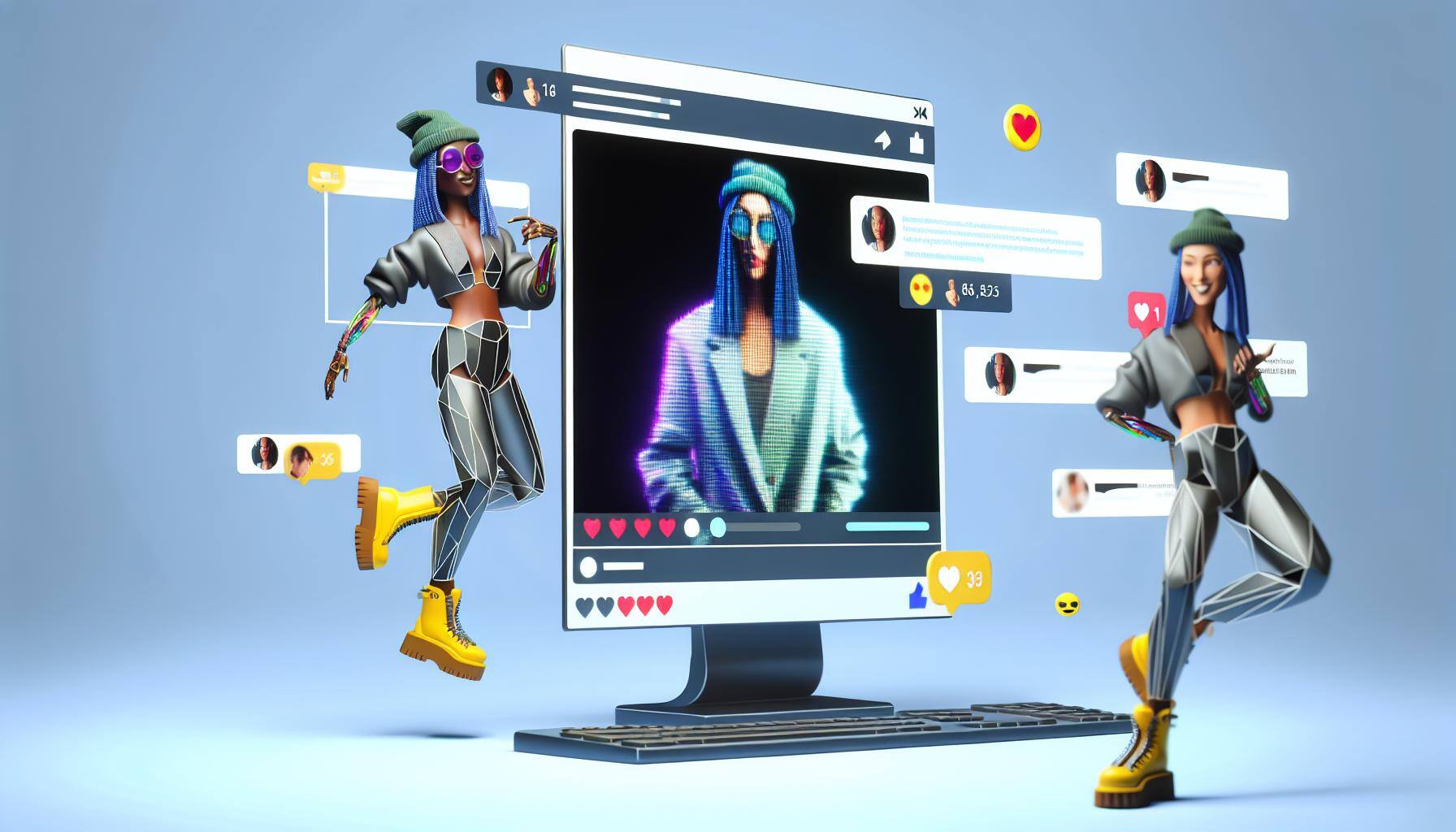5 min read
The Rise of Virtual Influencers in Social Media
In recent years, the world of influencer marketing has witnessed an interesting phenomenon - the rise of virtual influencers. With their impeccable...
3 min read
The Amazing Team at Virtual Marketer Max : Jun 25, 2024 10:02:49 AM
Social media influencers have become an integral part of our online world, shaping trends and affecting consumer behavior. These individuals, who have gained a significant following on platforms like Instagram, YouTube, and TikTok, have the power to influence the decisions and opinions of their audience specifically in USA. In this article, we will explore the definition, history, importance, current trends, challenges, solutions, statistics and analytics report, future prospects, and latest updates of USA based social media influencers.
A social media influencer is an individual who has established credibility, expertise, and a substantial following in a specific niche on social media platforms. They have the ability to sway the opinions, behaviors, and purchasing decisions of their followers due to their perceived authenticity, expertise, and relatability.
The concept of social media influencing dates back to the early 2000s, when bloggers and YouTubers started gaining popularity and attracting large audiences. As social media platforms evolved, more individuals began building their personal brands, focusing on specific topics or areas of interest. These influencers started collaborating with brands to promote products and services, recognizing the potential for monetization and partnerships.
Social media influencers are important for both brands and consumers. For brands, influencers provide a unique opportunity to reach a highly engaged and targeted audience. Influencer marketing has proven to be highly effective in generating brand awareness, increasing customer engagement, and driving conversions. On the other hand, consumers view influencers as trusted sources of information and inspiration in their respective fields of interest.
In recent years, there has been a shift towards micro-influencers, who have a smaller following but a highly engaged audience. Brands are realizing that these influencers often have a more specialized and loyal fan base, resulting in a more authentic and effective advertising partnership. And, video content has gained immense popularity, with digital medium platforms like TikTok and YouTube becoming the go-to platforms for influencers and brands alike.
While social media influencing offers numerous opportunities, it also comes with its challenges. One of the biggest challenges is building a genuine and engaged following. With the rise of fake followers and engagement bots, it has become increasingly difficult to discern between authentic influencers and those leveraging artificial tactics. Moreover, the constantly-evolving algorithms of social media platforms pose a challenge for influencers in ensuring their content reaches their intended audience.
To combat these challenges, platforms and marketers are increasingly relying on analytics and data-driven approaches. Influencers can analyze their audience demographics, engagement metrics, and content performance to make informed decisions about their content and partnerships. Brands, on the other hand, can leverage tools that assess an influencer's authenticity and engagement levels, ensuring a successful collaboration.
According to Influencer Marketing Hub, the influencer marketing industry is expected to reach $13.8 billion in 2021. Instagram remains the most popular platform for influencer marketing, with 89% of marketers considering it the most important platform for their influencer campaigns. A study by Linqia showed that 39% of marketers view influencer content as the most authentic, resulting in higher conversion rates.
The future of social media influencing looks promising. Influencer marketing is expected to continue growing exponentially, with a predicted market size of $22.3 billion by 2024. Additionally, as technology advances, new platforms and formats will emerge, providing influencers and brands with more opportunities to engage with their audience.
One of the latest updates is the rise of the virtual influencer, also known as CGI (computer-generated imagery) influencers. These virtual personalities, created by a combination of advanced AI algorithms and animation, are gaining popularity for their unique and sometimes surreal content. This trend opens up new possibilities for brands to collaborate with virtual influencers, tapping into their virtual worlds.
In conclusion, social media influencers have become a powerful force in the digital landscape, shaping trends, and impacting consumer behavior. As the industry continues to evolve, influencers and brands must adapt to new challenges and opportunities. By leveraging analytics and data, influencers can enhance their strategies, while brands can ensure successful collaborations. The future of social media influencing holds immense potential, with the rise of new platforms, formats, and virtual influencers transforming the landscape even further.

5 min read
In recent years, the world of influencer marketing has witnessed an interesting phenomenon - the rise of virtual influencers. With their impeccable...

4 min read
In the modern era, the rise of technology has revolutionized the way we perceive and consume content. With the advent of social media, a new breed of...
![12 Top Influencer Marketing Platforms [Updated 2025]](https://virtualmarketermax.com/hubfs/AI-Generated%20Media/Images/An%20image%20of%20a%20digital%20influencer%20marketing%20platform%20interface%20with%20analytics%20reports%2c%20statistics%2c%20and%20various%20tools%20for%20brands%20and%20influencers%20to%20coll.jpeg)
9 min read
Influencer marketing is no longer a buzzword—it’s a core strategy for brands seeking deeper customer engagement and measurable growth. But as the...